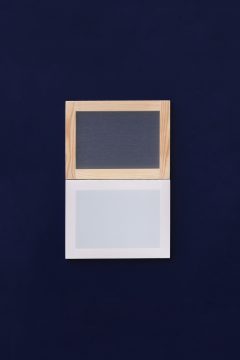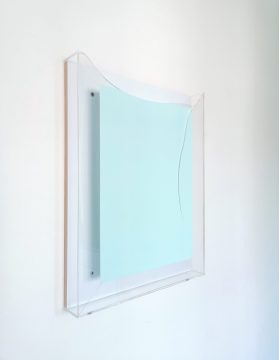Gábor Erdélyi, an artist who started out in the 90s and is one of the most representative artists of his generation at the turn of the millennium, takes the visitor to the frontiers of the fine arts. In 1999, at the Venice Biennale, he represented Hungary in a group exhibition entitled Taking on techné. Postconceptual Object and Installation Art in Hungary. The basic concept of his works, which fit without any problems into the latest trends of international trends, is – to stay within the language of painting – a determined avoidance of the constant trap of excessive thinking.
“The paintings keep away from daily social, sociological, and even more so political issues and moralising. In fact, they strive to go against the structures, trends, constructed concepts, spectacular schemes and ideas of the visual arts. One should not think here of self-righteousness or an anarchic approach, but rather of a high degree of freedom applied with a childlike sense of joy and unencumbered knowledge. […] My aim is to respect the rules of human reason, yet to abstract them as consciously as possible. I try to bring to the picture an action-activity without frills, without frills, without time, that is in fact coming from the unknown depths.”
Erdélyi expresses his concepts of the visual and theoretical critique of his genre in the form of interacting pictorial objects in which the general concepts of art historical language no longer operate. The only point that keeps his activity within strict limits is the extreme professionalism of the technical elaboration of his works.
His idiosyncratic philosophy seeks an unhinged balance between assertion (conviction) and negation (doubt), which paradoxically focuses on the absence of the image and is based on the need to represent emptiness, uncertainty and the idea rather than the subject.
In this ambivalent system, one of the artist’s tools is the storage box, which seeks to protect the picture, and the materially not yet existing unknown image. The realisation takes place between two end points – the impenetrable material (marble) and the infinite lightness of the passage of the framed immateriality covered by the delicate tulle.
One of the key works in the exhibition (and also the cuckoo’s egg) among the perfectly executed images, created with extraordinary precision, is a flawed, even half-broken object: the work Accident, Absence, Harmony, whose spectacularly cracked polycarbonate box frame metaphorically expresses a life story told, the balance or repose found after injury, absence, floating.

